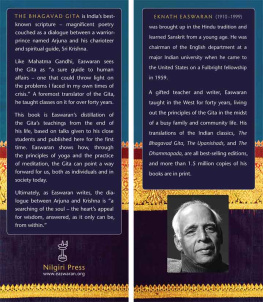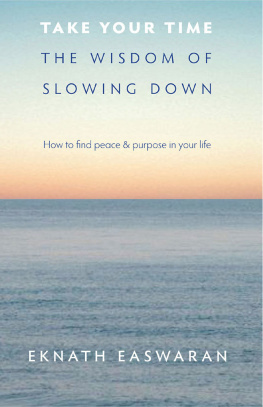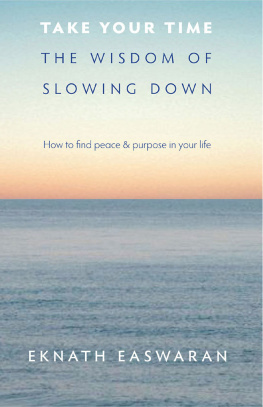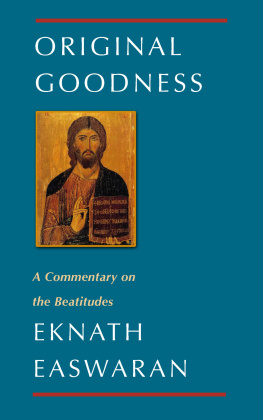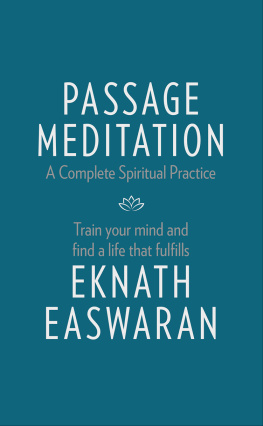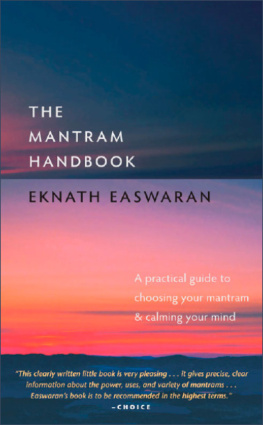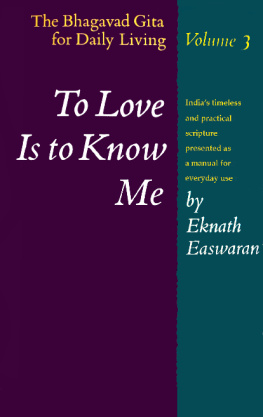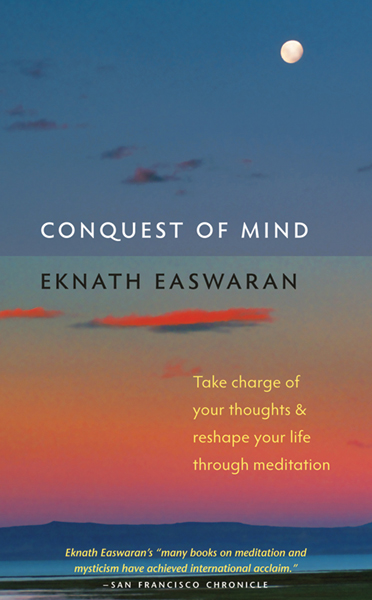Introduction
All that we are, the Buddha said, is the result of what we have thought. He might have added, And all we shall become is the result of what we think now.
Nothing, then, can be more important than being able to choose the way we think our feelings, aspirations, and desires; the way we view our world and ourselves. Mastery of the mind opens avenues of hope. It means that we can begin to reshape our life and character, rebuild relationships, thrive in the stress of daily living, become the kind of person we want ourselves to be.
In this book I present the art of training the mind how to respond to lifes challenges, drawing on almost thirty years of teaching meditation to an American audience. Each chapter was originally a talk given to a select group of students. I touch on theory, but the emphasis is always practical and down-to-earth. I have written for those who want to understand not only how the mind works, but also how it can be changed which means, in this context, those who are interested in the actual practice of meditation.
Today page8 we hear meditation used to describe a number of things, some of which have nothing to do with meditation as I understand it. These techniques may be relaxing, they may be inspiring, they may be good for your physical health, but as far as accomplishing enduring, beneficial changes in the mind, they have no more effect than writing on water. There are also time-honored methods of meditation which differ from the one I teach: for example, watching the flow of thoughts in detachment, without any attempt at control. I respect these methods in the hands of an illumined teacher, but confusion can result from mixing instructions that come from different perspectives. If you want to become a tennis champion, you dont take lessons from Vic Braden and Nick Bollettieri at the same time; they have utterly different approaches to the game. Meditation teachers have different approaches too, and it is good to remember that two people who say they meditate may be doing very dissimilar things.
When I talk about meditation, I am referring to a dynamic discipline that would be recognized in any of the major spiritual traditions of the world: teaching attention to flow without a break toward a single inspirational focus within the mind (in this case, the memorized words of an inspirational passage) until finally the mind becomes completely absorbed and all distracting thoughts disappear. In this profound absorption the mind is still, calm, and clear. This is our native state. Once we become established in it, we know once and for all who we are and what life is for. As the Bible puts it, Be still, and know that I am God.
In page9 these pages I will often refer to the great mystics of the world. This word mystic, too, is easily misunderstood. Mysticism is the conviction, born of personal experience, that there is a divine core in human personality which each of us can realize directly, and that making this discovery is the real goal of our lives. A mystic is anyone who has achieved this goal. The great mystics speak the same language, for they come from the same country of the soul. Their ranks include such luminous figures as Saint Francis of Assisi, Saint Teresa of Avila, Sri Ramakrishna, the Compassionate Buddha, and Mahatma Gandhi, among many others equally well known and relatively unknown.
Whenever I describe the mechanics of meditation in this book, I will always be referring to the method I teach, which I have practiced myself for many decades. It is essentially the training of attention. The technique is simple but far from easy. It requires effort, and like athletic conditioning it can be quite strenuous. Its purpose is not to attain some remarkable experience during meditation but to master the thinking process. The rewards, therefore, come during the rest of the day. As your meditation deepens, you will find yourself stronger and more resilient, better able to face the challenges of life as the kind of person you would like to be: loving, creative, resourceful, and full of vitality.
At the end of this book I give a very brief summary of the eight-point program which I myself have followed. There you will find instructions in meditation along with an introduction to seven very helpful practices, such as slowing down, which extend page10 the benefits of meditation into daily living. (This program is elaborated in detail in my book Passage Meditation, which has a full chapter on each point.) If you are not already familiar with these points from my other books, you might want to look now at the summary in Part 5 in order to get the most from the chapters that follow.
PART 1
Taking Charge of Your Thoughts
CHAPTER 1
Thinking in Freedom
Not long ago my wife and I went for an early morning walk on a secluded beach near our home. The coastline in northern California can be rugged, and on this stretch the waves were uncommonly high. I found myself absorbed in watching a huge log with which the sea was playing like a cat. Wave after wave carried the log onto the shore and then rolled it back, unresisting, in the curl of the backwash. Finally a huge swell swept it far up onto the sand. It lay there sodden, as if to say, I came here all by myself, and now Im going to stay here. I like this place. But a few minutes later another rush of water lifted it free again and carried it back into the sea. Along it went without a sign of protest, buffeted and rolled at the pleasure of the waves.
I couldnt help feeling that for the most part, this is what our lives are like too. The Buddha would say that most of us live at the mercy of circumstances, going wherever life takes us. Even those whom the world calls great, especially if we look beyond their sphere of greatness, often seem to have had scant say in their lives: they may have conquered many thousands, for example, page14 yet lived at the mercy of their own whims and passions. Like the Buddha, we might observe these vagaries and wonder to ourselves, Is that all there is to life, being buffeted to and fro by circumstances until the show is over? Is that the best a human being can manage?
As a former professor of English literature, when I saw those massive waves bearing down with the foam on their crests tossed by the wind, I immediately recalled some lines from Byron describing the white manes of the sea. I felt as if horses were charging down on me, and my first impulse was, The cavalry is coming. Let me run for my life! It was a normal response. But far out in the water, I noticed with surprise, were two young fellows whose response was just the opposite. They had no desire for a glassy surface. They wanted waves, fierce waves, the bigger the better.


